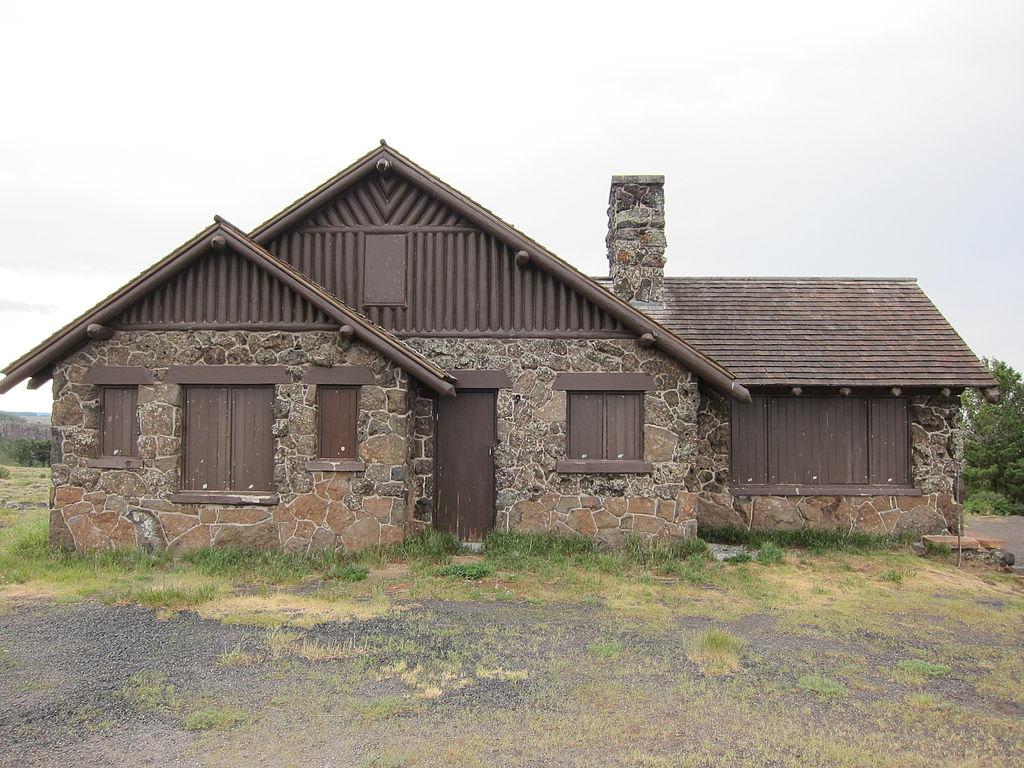Lands End Observatory
Full Article
Perched on the edge of Grand Mesa in western Colorado’s Mesa County, the Lands End Observatory was built in 1936–37 and gives visitors a spectacular view of the Gunnison and Grand River Valleys, the Uncompahgre Plateau, the San Juan Mountains, and the La Sal Mountains in Utah. Construction for the US Forest Service by the Work Progress Administration and the Civilian Conservation Corps, the building features a rustic design that aims to harmonize with its natural surroundings. The observatory continues to welcome visitors today, and is the most visited historic structure on Grand Mesa.
Rustic Beginnings
Prior to the 1930s, US Forest Service (USFS) buildings were built by hand and designed according to the individual whims and preferences of the rangers who built them. As regional and national engineering divisions developed, USFS building designs became more standardized. The designs came to reflect local architectural trends. In the case of the Lands End Observatory, the design came out of two developments brought on by the Great Depression in the 1930s.
First came the development of the Region 2 Architectural Division in 1936. Spanning parts of Colorado, Nebraska, and Wyoming, Region 2 oversaw architectural improvements across these states. It emphasized designs that were “rustic,” using natural materials and handcraftsmanship to evoke ideals of simplicity and harmony with nature. The Lands End Observatory is a clear example of the rustic style.
Second, the Works Progress Administration (WPA) and the Civilian Conservation Corps (CCC) both came about as part of President Franklin Roosevelt’s New Deal, and both agencies played a key role in improving public facilities. With the debut of the New Deal in 1933, the CCC became the main driver for the improvement of recreational facilities and increased funding for public construction. The increased national interest in recreational sites encouraged the CCC and USFS to work together to build recreational facilities throughout the Southwest. The CCC cleared the road to the observatory, and the WPA completed the road to the top of the mesa in 1934.
Construction on the observatory began once Lands End Road was completed. The USFS provided the designs for the observatory and oversaw construction, which was completed in 1937. The observatory building is divided into an entryway, exhibit room, observation room, and an apartment, with a detached latrine for public use.
The 1950s
The observatory served as the first Grand Mesa visitor center and offered its visitors the opportunity to picnic and enjoy the scenery. Use of the observatory peaked throughout the 1950s, when concessionaires who served the station in the summer lived in the apartment. They sold sandwiches to hungry travelers, maintained a primitive phone line, and managed the nearby Wild Rose Campground and Picnic Area. Concessionaires stopped living in the apartment by 1955, probably because of the lack of running water. USFS personnel have continued to manage the facility as a visitor center since then.
Today
In 1997 the Lands End Observatory was listed in the National Register of Historic Places. In 2015 the observatory received more than $10,000 from the State Historical Fund for a roof replacement and a historic structure assessment. The scenic drive and hiking trails surrounding the Lands End Observatory continue to receive visitors today, with sunset being a popular time to stop by because of the spectacular views.


















